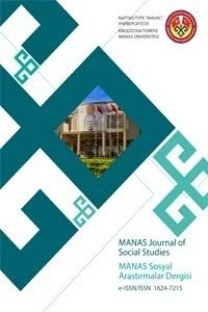IMPACT OF COMMUNITY ORIENTED TRAFFIC POLICING ON RED LIGHT VIOLATIONS: COMMUNITY RED LIGHT WATCH PROGRAM
TOPLUM ODAKLI TRAFİK POLİSLİĞİNİN KIRMIZI IŞIK İHLALLERİ ÜZERİNDEKİ ETKİSİ
___
Apel, R. J., & Nagin, D. (2011). General deterrence: A review of recent evidence. In Crime and public policy, edited by J. Q. Wilson and J. Petersilia (pp. 411-436). New York: Oxford University Press.Bankhead, K. & Herms, B. F. (1970). Reducing accidents by selective enforcement. Traffic Digest Review, 18, 1-38.
Bullock, K., & Sindall, K. (2014). Examining the nature and extent of public participation in neighborhood policing. Policing and Society, 24(4), 385-404.
Chin, H. C. (1989). Effect of automatic red light cameras on red-running. Traffic Eng. Control, 30, 175-179.
Croft, P. G. (1981). An assessment of running the red signal as a traffic safety problem. In Hulscher F. E.,
Walden, N. J., Croft P. G., Hallam, C. E. & Saffron, D. G. Driver Observance of Traffic Signals, Sydney, Traffic Authority of New South Wales, 1980.
Frank, J., Brandl, S. G., Worden, R. E., & Bynum, T. S. (1996). Citizen involvement in the coproduction of police outputs. Journal of Crime and Justice, 19(2), 1-30.
Freedman, M., & Paek, N. (1992). Enforcement resources relative to need: Changes during 1978-1989. Arlington, VA : Insurance Instıtute for Highway Safety.
Lum, K. M., Wong, Y.D. (1998). An overview of red light surveillance cameras in Singapore. ITE Journal Web. Institute of Transportation Engineers, Washington DC. (pp. 87-91).
Mastrofski, S. D., Worden, R. E., & Snipes, J. B. (1995). Law enforcement in a time of community policing. Criminology, 33(4), 539-563.
Mazzella, T. and Godfrey, D. (1995) Building and testing a customer responsive neighborhood traffic control program. Compendium of Technical Papers for the 65th ITE Annual Meeting, Institute of Transportation Engineers. (pp. 75-79).
Retting, R. A., Williams, A. F., Farmer, C. M., & Feldman, A. F. (1999). Evaluation of red light camera enforcement in Oxnard, California. Accident Analysis & Prevention, 31(3), 169-174.
Retting, R. A., Williams, A. F., Preusser, D. F., & Weinstein, H. B. (1995). Classifying urban crashes for countermeasure development. Accident Analysis and Prevention, 27, 283-294.
Skogan, W. G. (2004). Community policing: Common impediments to success. In L. A. Fridell & M. A. Wycoff (Eds.), Community policing: The past, present, and future (pp. 159–168). Washington, DC: The Annie E. Casey Foundation and the Police Executive Research Forum.
Skogan, W. G. (2006). The promise of community policing. In D. L. Weisburd & A. A. Braga (Eds.), Police innovation: Contrasting perspectives. New York: Cambridge University Press.
Skolnick, Jerome, H & David, H. B. (1988a). Theme and variation in community policing. Crime and Justice: a Review of Research, 10, 1-37
Skolnick, J. H. & David, H. B. (1988b). Community policing: Issues and practices around the world. University of Michigan Library (January 1, 1988)
Thompson, S. J., Steel, J. D. & Gallear, D. (1989). Putting red light violators in the picture. Traffic Engineering Control, 30(3), 122-125
Thomas Amy Aeron (2003). Community Traffic Policing Scoping Study: Final Report. Department for International Development. Project Report PR/INT/265 /2003
Weisburd, D. L., & Eck, J. E. (2004). What can police do to reduce crime, disorder, and fear? Annals of the American Academy of Political and Social Science, 593(1), 42-65.
Womble, J. E. (1990). Neighborhood speed watch: Another weapon in the residential speed control arsenal. ITE Journal, 60(2), 16-17.
Zimring, F., & Hawkins, G. (1973). Deterrence: The Legal Threat in Crime Control. Chicago, IL: University of Chicago Press.
- ISSN: 1694-7215
- Yayın Aralığı: 4
- Başlangıç: 2001
- Yayıncı: KIRGIZİSTAN-TÜRKİYE MANAS ÜNİVERSİTESİ
“OTHERIZATION” IN HANIF KUREISHI’S THE BUDDHA OF SUBURBIA
ÇOKLU KRİTERLERLE KARAR VERME YÖNTEMLERİNİN TUR GÜZERGÂHI BELİRLENMESİNDE KULLANIMI
Erkan AKGÖZ, Bakıt TURDUMAMBETOV
ULUSLARARASI ALANDA OMBUDSMANLIK KURUMU VE TÜRKİYE
BELGESEL FOTOĞRAFÇILIKTA ALTERNATİF BİR EĞİLİM: GEÇ FOTOĞRAFÇILIK
Handan DAYI, Nafia ÖZDEMİR HANYALOĞLU
VELİLER AÇISINDAN SOSYAL BİLGİLER DERSİ NE İFADE EDİYOR?
Ahmet Erdost YASTIBAŞ, Tuğçenur KAVGACI
